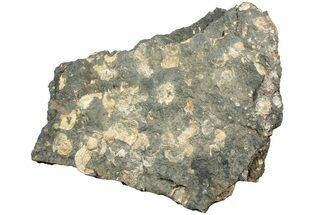FOSSIL BRACHIOPODS FOR SALE
Brachiopods are members of the phylum Brachiopoda, or lamp shells. They are marine bivalves that first appeared in the early Cambrian seas and still live today. However, their diversity peaked during the Devonian Period. They are so common in the fossil record that in some areas they make up most of the rock in which they are found.
9 Items
($29 to $85)
 Reviews
Reviews









